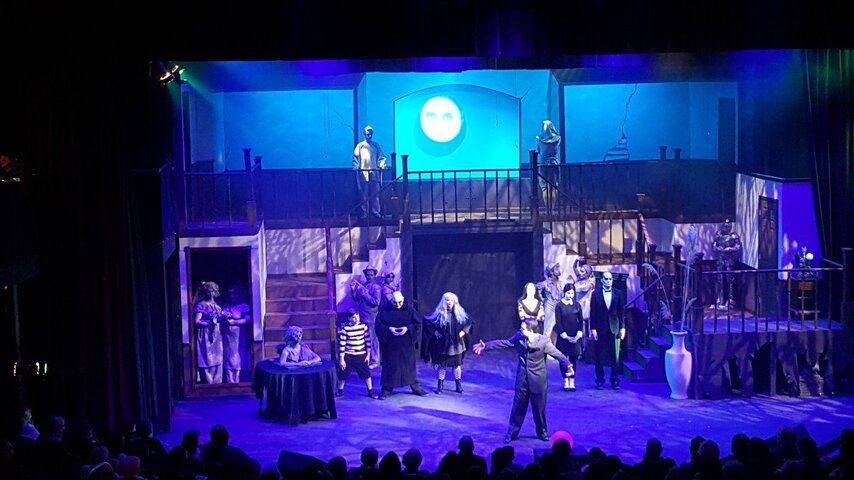For those interested, here are the
handrail detail requirements form the Life
Safety Code. The International Building Code has very similar requirements. There are reasons and occasions where varying form these in scenery is justified, but I would argue that using a 2X4 for a
handrail of an otherwise unseen
escape stair is wrong.
7.2.2.4.5
Handrail Details.
7.2.2.4.5.1 New handrails on stairs shall be not less than 34 in. (865 mm), and not more than 38 in. (965 mm), above the surface of the tread, measured vertically to the top of the
rail from the leading
edge of the tread.
7.2.2.4.5.2 Existing required handrails shall be not less than 30 in. (760 mm), and not more than 38 in. (965 mm), above the surface of the tread, measured vertically to the top of the
rail from the leading
edge of the tread.
7.2.2.4.5.3 The height of required handrails that form part of a guard shall be permitted to exceed 38 in. (965 mm), but shall not exceed 42 in. (1065 mm), measured vertically to the top of the
rail from the leading
edge of the tread.
7.2.2.4.5.4* Additional handrails that are lower or higher than the main
handrail shall be permitted.
7.2.2.4.5.5 New handrails shall be installed to provide a clearance of not less than 21⁄4 in. (57 mm) between the
handrail and the wall to which it is fastened.
7.2.2.4.5.6 Handrails shall include one of the following features:
(1) Circular cross section with an outside diameter of not less than 11⁄4 in. (32 mm) and not more than 2 in. (51 mm)
(2)Shape that is other than circular with a perimeter dimension of not less than 4 in. (100 mm), but not more than 61⁄4 in. (160 mm), and with the largest cross-sectional dimension not more than 21⁄4 in. (57 mm), provided that graspable edges are rounded so as to provide a radius of
not less than 1⁄8 in. (3.2 mm)
7.2.2.4.5.7 New handrails shall be continuously graspable along their entire length.
7.2.2.4.5.8
Handrail brackets or
balusters attached to the bottom surface of the
handrail shall not be considered to be obstructions to graspability, provided that both of the following criteria are met:
(1) They do not project horizontally beyond the sides of the
handrail within 11⁄2 in. (38 mm) of the bottom of the
handrail and provided that, for each additional 1⁄2 in. (13 mm) of
handrail perimeter dimension greater than 4 in. (100 mm), the vertical clearance dimension of 11⁄2 in. (38 mm) is reduced by 1⁄8 in. (3.2 mm).
(2) They have edges with a radius of not less than 0.01 in. (0.25 mm).
7.2.2.4.5.9 New
handrail ends shall be returned to the wall or floor or shall terminate at newel posts.
7.2.2.4.5.10 In other than dwelling units, new handrails that are not continuous between flights shall extend horizontally, at the required height, not less than 12 in. (305 mm) beyond the top
riser and continue to slope for a depth of one tread beyond the bottom
riser.
7.2.2.4.5.11 Within dwelling units, handrails shall extend, at the required height, to at least those points that are directly above the top and bottom risers.



